T.S. ELIOT ~ A CONVERSATION WITH MY SOUL



“I am a writer and I want to write.” ― Jane Bowles Fear and Hope “Like most people, you

THE SIMONE DE BEAUVOIR EFFECT “I am incapable of conceiving infinity, and yet I do not accept finity.” SIMONE
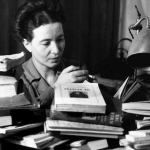
Some quotes by writer Simone de Beauvoir (1908-1986) “I wish that every human life might be pure transparent freedom.” “One


“I am a writer and I want to write.” ― Jane Bowles Fear and Hope “Like most people, you

THE SIMONE DE BEAUVOIR EFFECT “I am incapable of conceiving infinity, and yet I do not accept finity.” SIMONE
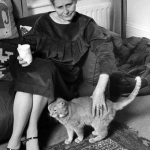
ONE WAY TO READ A BOOK In the opinion of the famous writer Doris Lessing there is only one

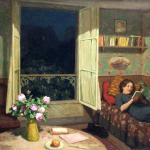
Series Women and their Passion for Books “What on earth could be more luxurious than a sofa, a book, and
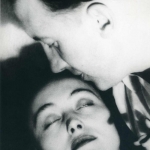
A poem by Paul Eluard “I cannot be known Better than you know me Your eyes in which we sleep
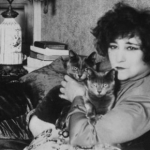
A WRITER LOVES HER CAT. “I went to collect the few personal belongings which…I held to be invaluable: my cat,

A day spent without the sight or sound of beauty, the contemplation of mystery, or the search of truth or perfection is a poverty-stricken day; and a succession of such days is fatal to human life.
Lewis Mumford
Lewis Mumford (October 19, 1895 – January 26, 1990) was an American historian, philosopher of technology, and influential literary critic.

“I am a writer and I want to write.” ― Jane Bowles Fear and Hope “Like most people, you
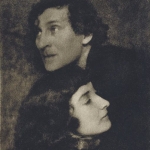
MARC AND BELLA CHAGALL ~ A COLORFUL LOVE “In our life there is a single color, as on an artist’s
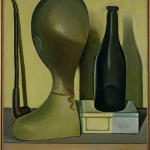
THE SURREALITY/REALITY OF GIORGIO MORANDI. Giorgio Morandi (1890 -1964) was an Italian painter and printmaker. “There is nothing more surreal,


MARIA YAKUNCHIKOVA (1870-1902) WOMEN WITH A PASSION FOR ART The first female artist I want to introduce in the series
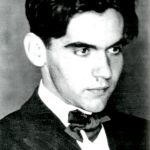
Federico Garcia Lorca “Let there be a landscape of open eyes and bitter wounds on fire. No one is sleeping

MARC AND BELLA CHAGALL ~ A COLORFUL LOVE “In our life there is a single color, as on an artist’s


“I am a writer and I want to write.” ― Jane Bowles Fear and Hope “Like most people, you

MARIA YAKUNCHIKOVA (1870-1902) WOMEN WITH A PASSION FOR ART The first female artist I want to introduce in the series

MARC AND BELLA CHAGALL ~ A COLORFUL LOVE “In our life there is a single color, as on an artist’s


“And the danger is that in this move toward new horizons and far directions, that I may lose what I

“Colour is the key. The eye is the hammer. The soul is the piano with its many chords. The artist

“When the Day of Judgment dawns and people, great and small, come marching in to receive their heavenly rewards, the

I dream a lot. I do more painting when I’m not painting. It’s in the subconscious.
Andrew Wyeth
Andrew Wyeth Pennsylvania, USA – 12th of July, 1917 /2009
Famous Andrew Wyeth paintings include realist works of rural scenes, usually with a figure, object, or animal in it. His unusual compositions tend to add to the understated drama of his work.

“I am a writer and I want to write.” ― Jane Bowles Fear and Hope “Like most people, you

MARC AND BELLA CHAGALL ~ A COLORFUL LOVE “In our life there is a single color, as on an artist’s

THE SURREALITY/REALITY OF GIORGIO MORANDI. Giorgio Morandi (1890 -1964) was an Italian painter and printmaker. “There is nothing more surreal,

“I felt that my senses were leaving me. The sentence, the dread sentence of death, was the last of distinct accentuation which reached my ears”
Edgar Allan Poe ~ The Pit and the Pendulum
The Pit and the Pendulum is a claustrophobic tale of horror and suspense with an overpowering atmosphere of dread that has prompted much discussion about the writer’s mental state. We could consider this masterpiece though as a compelling work of a gifted imagination.
Source 1001 books

DREAMLAND By a route obscure and lonely, Haunted by ill angels only, Where an Eidolon, named NIGHT, On a black

“The Way of Silence” (1900-1903) by Frantisek Kupka (1871-1957) According to Audrey Wagtberg Hansen in her article “Cold Gods and

Deep into that darkness peering, long I stood there, wondering, fearing, doubting, dreaming dreams no mortal ever dared to dream

Witches’ Sabbath is a 1798 oil on canvas by the Spanish artist Francisco Goya . Goya used the imagery of covens of witches in a number of works, most notably in one of his Black Paintings, Witches Sabbath or The Great He-Goat(1821–1823) which contains similar sharp political and social overtones. At the time, a bitter struggle raged in Spain between liberals and those in favour of a church and a royalist-lead state
Witches’ Sabbath shows the devil in the form of a garlanded goat, surrounded by a coven of disfigured, young and aging witches in a moonlit barren landscape. The goat possesses large horns and is crowned by a wreath of oak leaves. An old witch holds an emaciated infant in her hands. The devil seems to be acting as priest at an initiation ceremony for the child, though popular superstition at the time believed the devil often fed on children and human foetuses. The skeletons of two infants can be seen; one discarded to the left, the other held by a crone in the centre foreground.
The English word “sabbat” came indirectly from Hebrew (שַׁבָּת). In Hebrew it means “to cease” or “to rest”. In Judaism Shabbath is the rest day celebrated on Saturday. In connection with the Medieval popularity of the belief that Jews worship the Devil, satanic gatherings of witches were called “sabbats” or synagogues. The latter is a Jewish places of worship, much like a church. Alternately, some Christians were accused of Judaizing. Christian Sabbathkeepers, who never accepted Emperor Constantine’s edict in 321 A.D., the first enforcing Christian worship on Sunday rather than on Sabbath, were demonized and accused of witchcraft; hence, the accusatory nomenclature, “witches’ sabbath.”
Source Wikipedia

MARIA YAKUNCHIKOVA (1870-1902) WOMEN WITH A PASSION FOR ART The first female artist I want to introduce in the series

Federico Garcia Lorca “Let there be a landscape of open eyes and bitter wounds on fire. No one is sleeping

MARC AND BELLA CHAGALL ~ A COLORFUL LOVE “In our life there is a single color, as on an artist’s